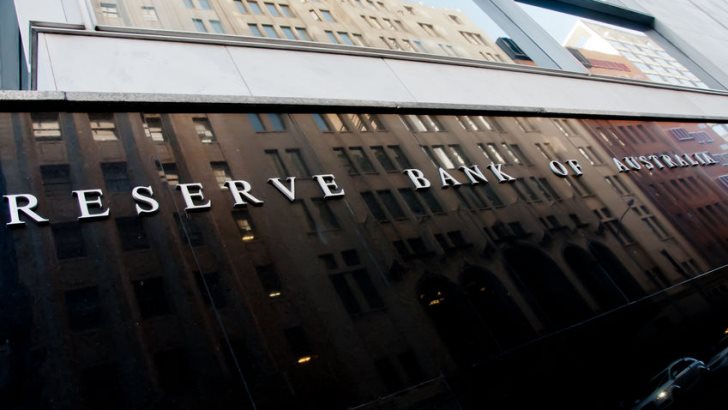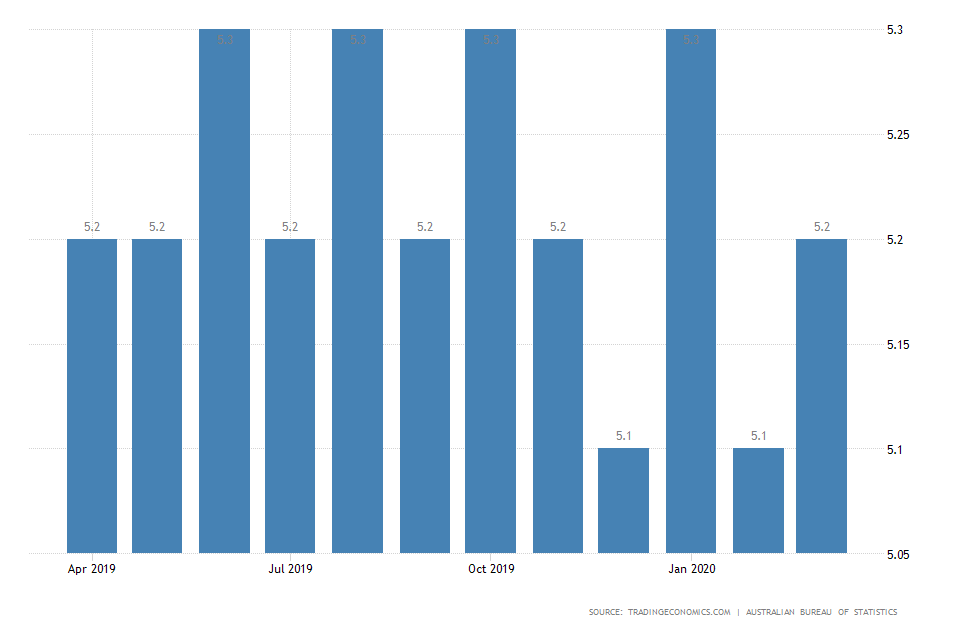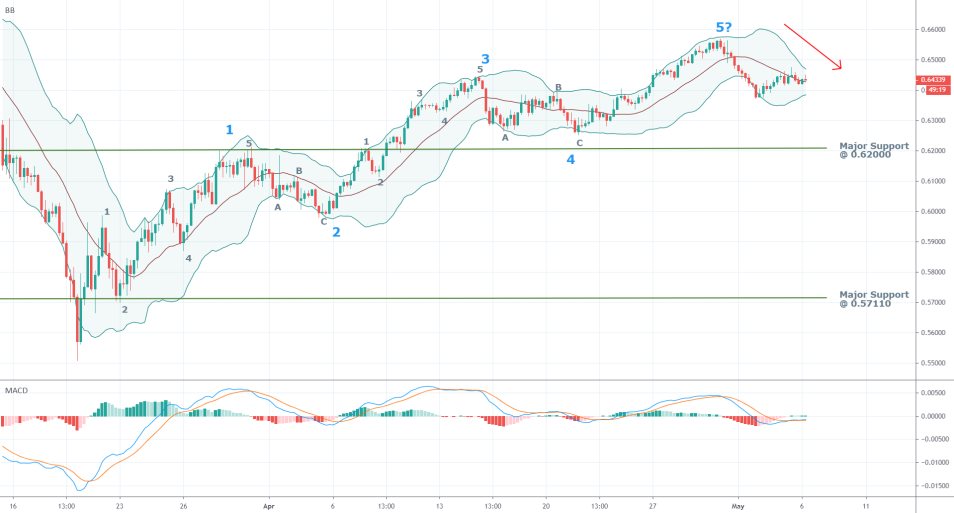
The Governing Board of the Reserve Bank of Australia held one of its regular monetary policy meetings yesterday, on which it was decided the interest rate would not be changed from its current value of 0.25 per cent.
The consensus forecasts vastly anticipated this because the situation has not changed drastically from the Board's previous meeting in April, and the overall economic outlook remains muted.
As we argued in our 'Weekly Expectations' update from Monday, the central point of Tuesday's meeting concerned the Board's views on the current monetary policy, and whether the recent changes to the global economic outlook necessitate adjustments to the Bank's stance.
In the post-decision statement, the Board asserted that no such actions are needed presently and that it will continue monitoring the situation as it develops in the following weeks and months.
Additionally, the Board published its revised projections regarding the likely scope of the evolving recession of the Australian economy by the end of the year, as well as its expectations for a recovery in 2021.
"The Australian economy is going through a very difficult period and there is considerable uncertainty about the outlook. Reflecting this uncertainty, the Board considered a range of scenarios at its meeting. In the baseline scenario, output falls by around 10 per cent over the first half of 2020 and by around 6 per cent over the year as a whole. This is followed by a bounce-back of 6 per cent next year. […] In the baseline scenario considered by the Board, the unemployment rate peaks at around 10 per cent over coming months and is still above 7 per cent at the end of next year."
The RBA's primary economic projections encompass a potential scenario in which the overall unemployment rate nearly doubles by the end of the year, indicating that the toll on the labour market from the coronavirus fallout is still far off from peaking.

Such expectations for future economic ripples caused by these external headwinds have pressured the Australian dollar, which has recorded a marginal stabilisation over the past several weeks after having fallen to historical lows before the COVID-19 crash.
The Aussie's bullish correction against the US dollar is now going to be strained by the RBA's dimmer outlook concerning Australia's future economic prospects, which could exhaust the bullish sentiment in the market.
The AUDUSD has already concluded establishing a major 1-5 impulse wave pattern, which could now be followed by another bearish downswing, provided that the market discounts RBA's statement as a solid confirmation for future destabilisations.

Trendsharks Premium
Gold is undergoing a correction, as investors take profits to offset losses from falling stock prices, impacting their margins. However, we anticipate a renewed wave of [...]
The Swiss stock market index is mirroring its global counterparts, such as Germany 40 and US100, experiencing a sharp decline following the announcement of new [...]
We’re analyzing the weekly chart to grasp the broader market trend. Over the past three years, the US30 index has surged by 17,000 points, often resembling a nearly straight [...]
Over the past week, the DAX has experienced a sharp decline, plunging by an astonishing 3,400 points. This downward movement is not isolated, as its international counterparts, such as the UK100 and US100, are also facing significant [...]
EURUSD recently formed a double top at 1.0930, signaling a potential trend reversal, and has since begun a correction. After a 600-pip rally since early March, a pullback at this stage is both expected and healthy. Given these conditions, we are placing a [...]
Since early March, EURJPY has surged nearly 1,000 pips, providing us with several excellent trading opportunities. However, as the rally matures, many early buyers are beginning to take profits, leading to a noticeable slowdown in the uptrend. On Friday, the pair formed a [...]
The AUDJPY currency pair continues to be dominated by bullish momentum, as multiple golden cross patterns reaffirm the strength of the ongoing uptrend. Despite this, we are witnessing a much-needed [...]
The EURAUD currency pair appears to be undergoing a trend reversal, signaling a potential shift in market direction. A notable technical development is the formation of a Death Cross on the chart, a widely recognized bearish indicator that typically suggests a [...]
After securing an impressive 200-pip profit last week, the EURJPY currency pair is now undergoing a southward correction, retracing some of its recent gains. Despite this temporary pullback, the Golden Cross remains intact, reinforcing our view that the overall trend continues to be [...]
The appearance of a Golden Cross in Silver strengthens our analysis that the metal is currently in a strong uptrend, indicating further bullish momentum in the market. This technical pattern, where the short-term moving average crosses above the [...]
This trade presents a considerable level of risk and can be classified as an opportunistic move based on recent price action. The GBPUSD currency pair has experienced a substantial bullish rally, surging by nearly 500 pips in a strong upward movement. However, after this extended period of appreciation, the pair is showing signs of a potential [...]
The anticipated Death Cross on the SMI20 appears to be failing as price finds strong support at the 23% Fibonacci retracement level. After testing this area, the index has shown bullish strength, printing several large green candles, signaling an increase in [...]
A Golden Cross has just appeared on the USDJPY chart, signaling a potential bullish move. This technical pattern occurs when the 20 period moving average crosses above the 60 period moving average, a widely recognized indication of increasing [...]
After 2 months of a down trend, we finally see some indications of price recovery for Oil. The golden cross, a historic buy signal, supports this [...]
For the past month, the German DAX40 has experienced a remarkable 10% surge, reflecting strong bullish momentum. Despite ongoing market volatility and frequent pullbacks, every dip continues to attract fresh buyers, reinforcing the [...]
Oil continues its downward trajectory, despite occasional pullbacks. The overall trend remains bearish, reinforced by multiple Death Cross patterns, a classic sell signal indicating further weakness. Adding to this bearish outlook, the critical [...]
Over the past few days, gold has experienced a sharp decline of more than $100. This downturn can be attributed in part to traders securing profits to manage their margins, which are under strain due to the significant drop in major indices. Currently, gold has fallen below the [...]
The NASDAQ 100 index is showing strong bullish momentum, as evidenced by the formation of a Golden Cross on the chart. This classic buy signal occurs when the short moving average crosses above the long term moving average, suggesting that upward momentum is [...]
The EURAUD currency pair has encountered a significant resistance level, failing to break above the critical 61% Fibonacci retracement level. This suggests that bullish momentum is weakening, reinforcing the case for a potential downward move. Given this technical setup, we favor entering a [...]
The UK100 is experiencing a remarkable rally! Over the past few weeks, the British stock market index has surged nearly 800 points. Each minor dip has attracted more buyers, fueling the bullish momentum. However, since last week, we’ve observed a slight [...]




















